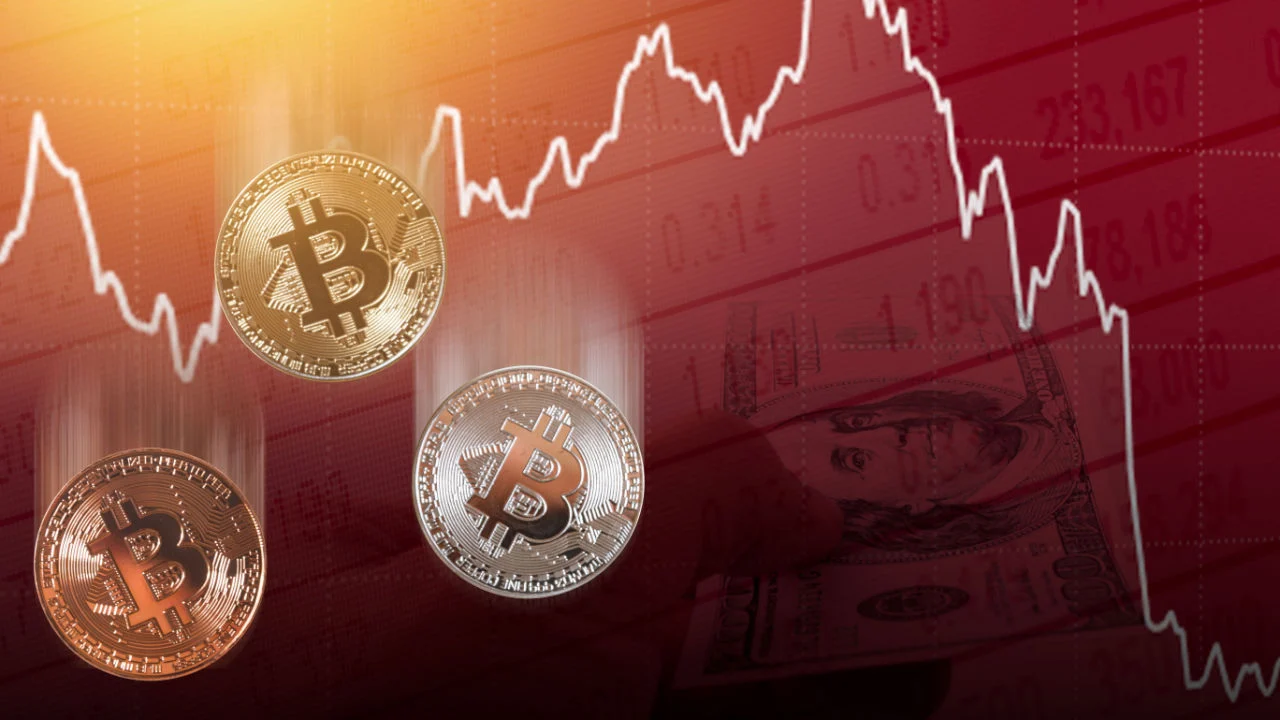The cryptocurrency market has long been a volatile and dynamic space, with Bitcoin often taking center stage due to its pioneering status and remarkable price fluctuations. For over a decade, Bitcoin has garnered both skepticism and admiration as its price has reached incredible highs and devastating lows. As the value of the digital currency reaches its peak, investors, traders, and market analysts are deeply concerned about the recent surge in Bitcoin prices. As the price of Bitcoin continues to rise and encounters new challenges, it is crucial to closely examine the factors driving its price, the latest trends, and the potential future implications for both Bitcoin and the broader cryptocurrency market.
Journey of Bitcoin’s Price
The price of bitcoin has not followed a linear trend. Bitcoin Price Surge Bitcoin has gone through multiple price peaks and valleys since its creation in 2009 by the anonymous Satoshi Nakamoto. Following several years of steady growth, Bitcoin’s 2017 price spike to nearly $20,000 thrust it into the spotlight on a worldwide scale. In 2020 and 2021, Bitcoin made a strong recovery after experiencing a steep drop following its unexpected ascent.
The price of Bitcoin hit a record high of almost $69,000 in 2021. Some of the reasons for Bitcoin’s stratospheric ascent include widespread acceptance as a medium of exchange and a store of value comparable to gold, as well as rising institutional interest and adoption. After reaching its all-time high, the price of Bitcoin saw a correction and fell sharply in 2022 and 2023. Bitcoin, nevertheless, has proven resilient in the face of market volatility, and many now think it may be about to topple its prior ATH.
Institutional Interest Boosts Bitcoin’s Price
More and more large financial institutions are buying Bitcoin, which has been a major trend over the last several years. Several well-known banks have started providing Bitcoin-related services, such as trading, investment products, and custody, including Goldman Sachs, Fidelity, and JPMorgan. In addition, major companies like MicroStrategy and Tesla have included Bitcoin in their financial statements, seeing digital money as a protection against inflation and a medium of exchange for the future.
 For Bitcoin’s price to rise, this institutional interest is crucial. Bitcoin gains credibility as a mainstream asset class when significant institutional investors join the market, which usually means large capital inflows. Central banks throughout the world have printed huge quantities of money in reaction to crises like the COVID-19 pandemic, adding to the global economic uncertainty and making Bitcoin’s role as an inflation hedge all the more attractive.
For Bitcoin’s price to rise, this institutional interest is crucial. Bitcoin gains credibility as a mainstream asset class when significant institutional investors join the market, which usually means large capital inflows. Central banks throughout the world have printed huge quantities of money in reaction to crises like the COVID-19 pandemic, adding to the global economic uncertainty and making Bitcoin’s role as an inflation hedge all the more attractive.
Bitcoin’s Need for Clearer Regulations
Bitcoin needs more transparent regulatory frameworks globally before it can reclaim its former all-time high. Regulating cryptocurrency has been a bumpy road for quite some time. Some nations’ governments have begun investigating the possibility of establishing central bank digital currencies (CBDCs), while others, like China’s, have taken a hard line on cryptocurrency trade and mining.
However, recent data indicates that a growing number of countries are considering Bitcoin and other cryptocurrencies as they strive to establish transparent and welcoming laws. U.S. citizens are optimistic about the potential of an exchange-traded fund (ETF) for Bitcoin, as it would offer regular citizens a secure and straightforward way to invest in the cryptocurrency. El Salvador is just one of several courageous nations that have taken the bold step of recognizing Bitcoin as legal money, setting an example for other governments.
Technological Advancements
There is a constant push for improvements in scalability, security, and efficiency in the blockchain, the technology that underpins Bitcoin. To overcome Bitcoin’s main drawback, transaction throughput, the Lightning Network is a layer-two scaling solution that is built on top of Bitcoin. Its purpose is to speed up transactions and decrease fees.
Rapid implementation of the LightningBitcoin Price Surge Network and related modifications have the potential to make Bitcoin more suitable for regular transactions, which in turn might increase its demand and price. Another breakthrough that could increase Bitcoin’s use case and popularity across industries is Taproot, a significant improvement to the Bitcoin protocol that was introduced in late 2021. This upgrade improves privacy, security, and flexibility.
increased Public Awareness
Retail investors hoping to cash in on Bitcoin’s growth potential may push up its price as the cryptocurrency maintains its high profile in the mainstream media. The rising acceptance of Bitcoin in commonplace transactions (such as online purchases) and educational initiatives are all factors in the phenomenon’s meteoric rise in popularity. Users are finding it easier to purchase, store, and spend Bitcoin due to the proliferation of platforms, wallets, and apps that are Bitcoin-friendly.

The demand for Bitcoin is expected to rise, which will cause its price to rise, as more people get comfortable with the technology. The global economic environment plays a crucial role in Bitcoin’s price movements. In times of economic instability or financial crises, Bitcoin’s appeal as a decentralized, inflation-resistant asset grows. The COVID-19 pandemic, for example, highlighted Bitcoin’s potential as a haven during times of financial uncertainty.
Potential Challenges to Bitcoin’s Price Surge
While the factors listed above are potential catalysts for Bitcoin’s price to reach new heights, several challenges could dampen its growth:
- Volatility: Bitcoin’s inherent price volatility could scare off retail and institutional investors. The unpredictable nature of Bitcoin’s price, with dramatic swings in value, poses a significant risk for investors.
- Regulatory Risks: Governments around the world may introduce stricter regulations or outright bans on Bitcoin, especially if it gains wider adoption. This could stifle its growth or hinder its progress toward new ATHs.
- Competition from Altcoins: While Bitcoin remains the dominant cryptocurrency, numerous other digital assets are vying for market share, including Ethereum, Solana, and Cardano. These altcoins could limit Bitcoin’s growth potential, especially if they offer superior technological solutions or scalability.
Summary
Bitcoin’s price has shown remarkable durability despite market volatility, distrust from institutions, and obstacles from regulators. Bitcoin Price Surge The likelihood of clearer laws, increased institutional acceptance, and technological developments make it highly probable that Bitcoin might surpass its previous all-time high. Regulator concerns, market volatility, and rivalry from other cryptocurrencies are a few obstacles that might impede its rise.
Investors should exercise caution when dealing with Bitcoin, as the cryptocurrency can see both large profits and quick losses. Whether Bitcoin overcomes additional obstacles that cap its price increase or becomes a mainstream asset will likely be decided in the next several years. Whatever the outcome, the history of Bitcoin will remain a fascinating and unexpected tale in financial history.


